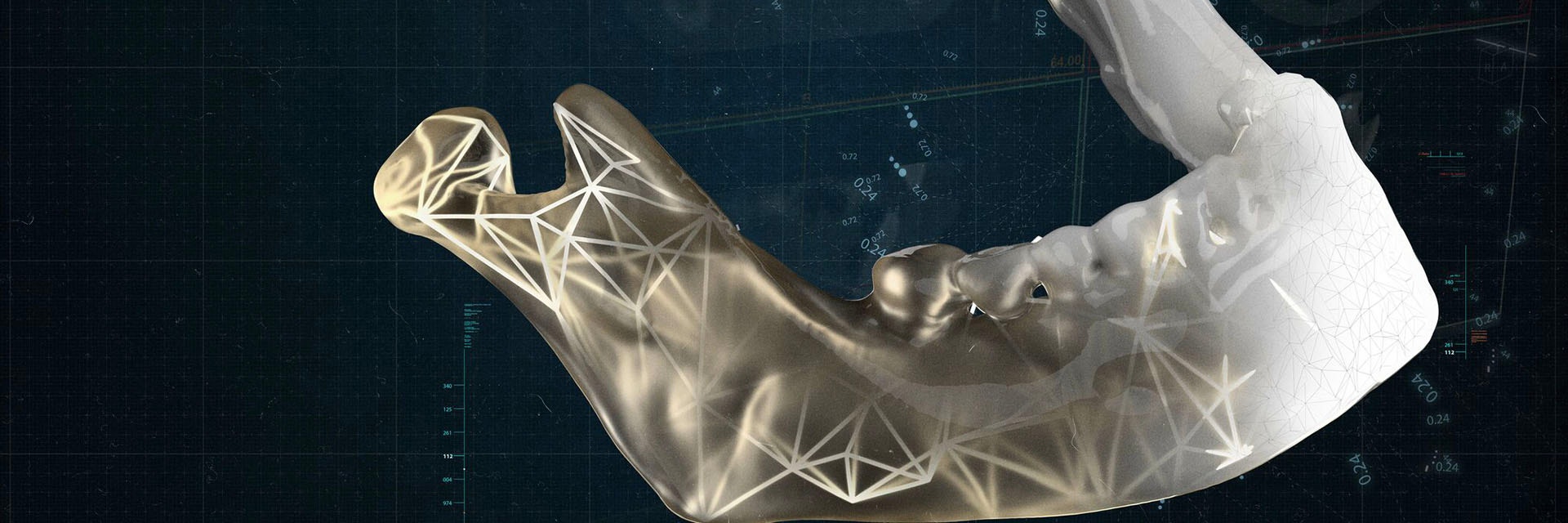EXPERT INSIGHT
Orthognathic Surgery's Missing Link for More Predictable Outcomes

The impact of orthognathic surgery goes beyond just achieving a good dental occlusion; it consists of attaining balance in facial characteristics to lead to optimal aesthetical and functional results. To this point, predicting postoperative outcomes and adjusting the procedure to the needs of each patient has become vital.
Surgical planning in this field has evolved from cephalometry drawn on profile teleradiographs to advanced analysis of 3D reconstructed tomography that allows visualization of all planes for exact measurement and a considerable reduction in errors.
We spoke with Dr. María Clara Jaramillo Campuzano, a recognized dentist, maxillofacial skull surgeon, and an active member of the Colombian Association of Oral and Maxillofacial Surgery. From a surgeon's perspective, we were able to see how the planning that we know today allows expected results and impacts the lives of its protagonists.She shares, "Since 2013, I began looking into 3D planning for orthognathic surgery. I had been working for ten years in 2D planning, and there was always a gap. I also realized that all the information that a CT scan gave me could be applied in this type of planning. I realized that this gap was being addressed when I saw the development of the medical software industry in this field."


She shares, "Since 2013, I began looking into 3D planning for orthognathic surgery. I had been working for ten years in 2D planning, and there was always a gap. I also realized that all the information that a CT scan gave me could be applied in this type of planning. I realized that this gap was being addressed when I saw the development of the medical software industry in this field."
“Today, orthognathic surgery cannot be done without virtual planning. It is essential.”
— Dra. María Clara Jaramillo Campuzano
Dr. Jaramillo had the astuteness to develop her first 3D planning case simultaneously in 2D to compare results and verify its effectiveness. She adds, "I realized, along the way, that indeed, 3D planning was what I was waiting for — it was the missing link in orthognathic surgery. That was when I started working on more complex cases." However, she tells us that she found the sector apprehensive because they considered it too sophisticated and inaccessible of a procedure. So she became the leading promoter of 3D planning as a safe and valid tool for both patients and surgeons.
As for the advantages, she shares: "I trained to do maxillofacial surgery with wire osteosynthesis, and then I went on to osteosynthesis with titanium. And now, we work with personalized osteosynthesis material — we are already working with personalized implants! You can see the evolution of maxillofacial and orthognathic surgery from the first row. Before, we planned with an articulator locked in a laboratory for seven to eight hours, and now, we can sit at the computer, at home, with all the tools to safely and predictably plan a case."
She adds, "Just being able to show a patient what we are going to do, why we are going to do it, and where we are going to go allows us to interact with them when designing their surgery, which allows them to understand and commit to the case."
For the last four years, Dr. Jaramillo has been using Mimics, 3-matic, and ProPlan CMF software. We have had the opportunity to accompany her training and closely guide her processes. Thanks to her passion and thirst for innovation, she has become a key opinion leader in the sector. Dr. Jaramillo clarifies, "Materialise gave me access to their software and the training necessary to use it. The truth is that I have had close, validating support in my interactions with the Materialise biomedical engineers."
She adds, "We can find easy-to-use and automated software on the market, but I don't think we will get the same results as with Materialise software. I do not consider myself an engineer, but I have learned a lot about their work, and it has allowed me to value and take advantage of many of the tools they offer. Today, orthognathic surgery cannot be done without virtual planning. It is essential."
Over the years, the industry has developed ways to make 3D planning accessible. Many surgeons have become experts and educate others with the close accompaniment and training of the technology developers. In contrast, others access the outsourced service by working hand in hand with the engineers. Thus, 3D planning becomes a multidisciplinary exercise that brings together the best of each professional for the benefit of patients.
"I tell my colleagues not to be afraid. In my experience, after helping surgeons plan, no one has ever told me that they regret it. They always tell me 'this is the best' and 'why haven't I done this before?'. We can even plan now without having to learn how to use the tool because we can outsource it.", she adds.
Thanks to Dr. María Clara Jaramillo for sharing her experience and vision and for disseminating this much-needed practice in medical care today. At Materialise, we continue to closely accompany those who take the plunge and contribute to mass personalization that will soon become the industry standard.
L-102667
Share on:
You might also like
Never miss a story like this. Get curated content delivered straight to your inbox.
